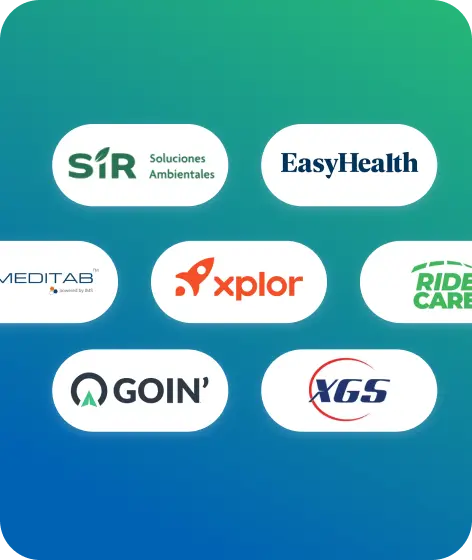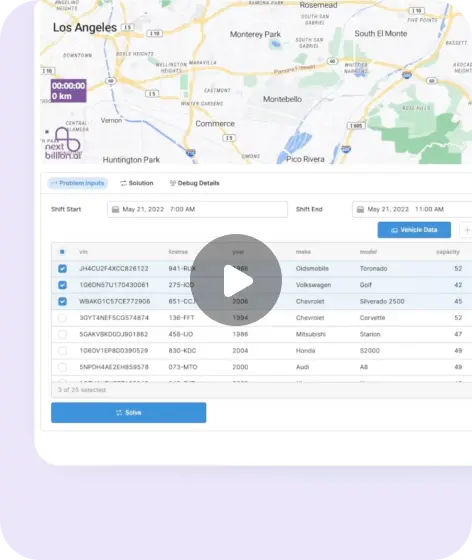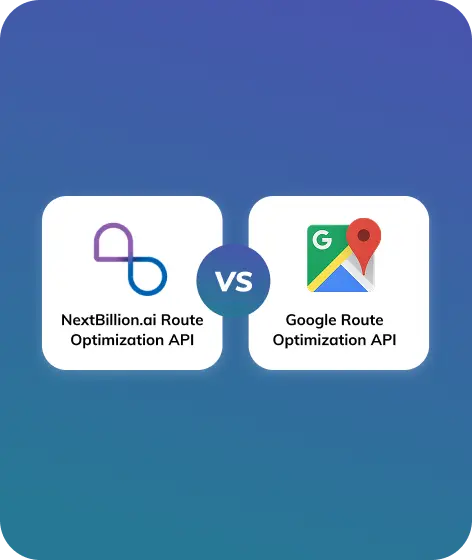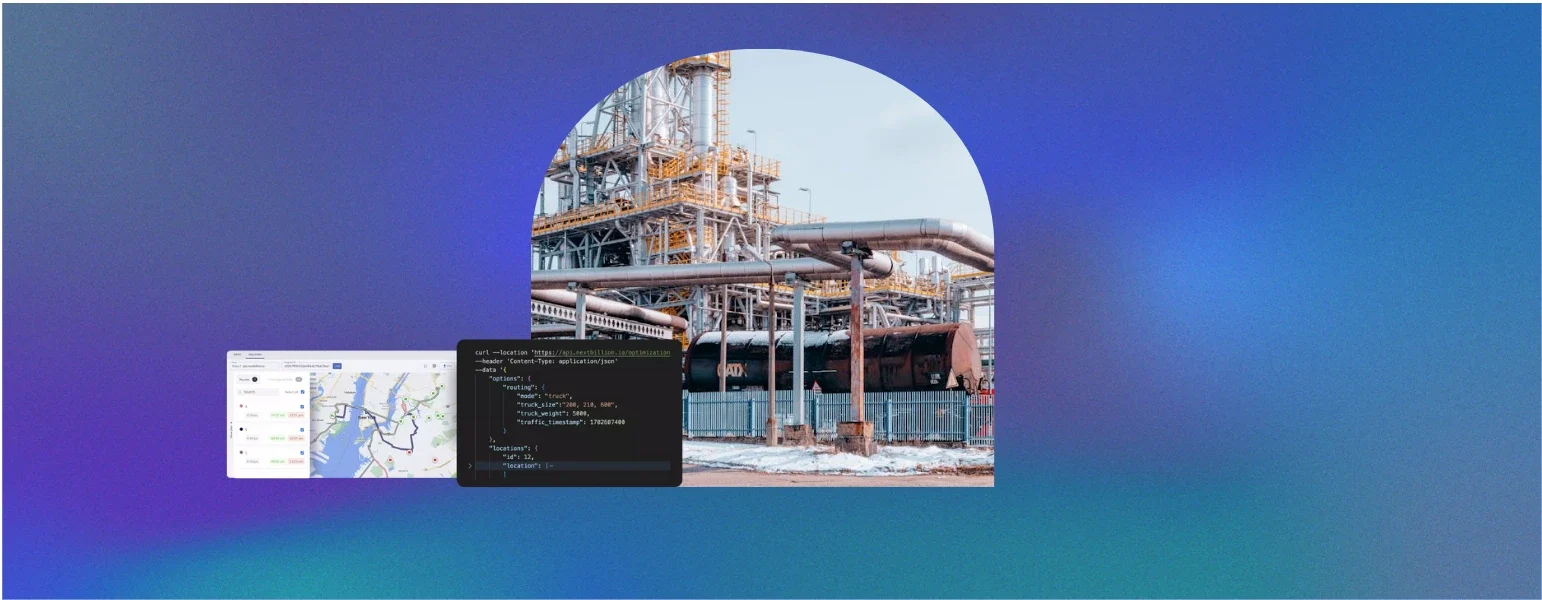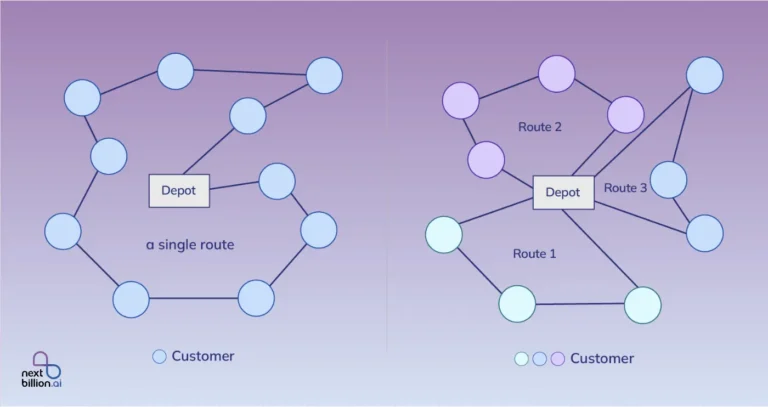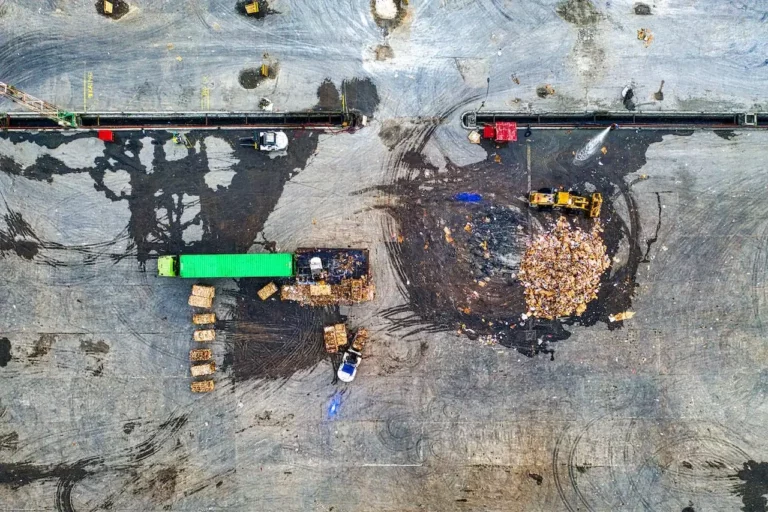
Table of Contents
The global oil and gas industry is a complex ecosystem with a vast network of operations spanning from exploration and production to refining and distribution. At the center of this complex web lies oil and gas logistics, which is responsible for the seamless movement of resources, equipment, and personnel across the supply chain.
According to a recent report from IBIS World, the US market size for the revenue of oil and gas extraction will surge to $730 billion in 2023.
Advanced technologies such as Artificial Intelligence (AI), Geographic Information Systems (GIS), and Internet of Things (IoT)- enabled tracking devices are essential for effortlessly managing oil and gas logistics. Although there is no shortage of supply, demand, or financial market share, does the industry lack the transportation requirements to fulfill its entire supply chain needs?
Nonetheless, the oil and gas industry still experiences uncertainty, with fluctuating fuel costs, increased production, and supply chain distractions. Therefore, energy companies are seeking ways to improve operability and efficiency, which starts with effective route optimization.
The integration of route optimization software can mitigate these uncertainties in oil and gas logistics, including fuel cost volatility and inefficiencies in production logistics, through advanced predictive analytics tools like machine learning algorithms.
Now, the question is, how important is optimized routing aid in the cost and safety of oil and gas logistics? Read on to immerse yourself in the dynamic world of route optimization software, exploring its key features, challenges, and future trends shaping the industry landscape.
Benefits of Route Optimization Software

Incorporating advanced technologies into route planning and optimization streamlines your oil and gas logistics operations. It positions businesses to manage their delivery networks better, eventually driving growth and competitive advantage. Here is how you can achieve significant benefits by meticulously planning and continually optimizing your routes.
1. Improved Efficiency and Cost Reduction
When it comes to oil and gas logistics, deliveries must be tracked regularly to make proper adjustments and maintain maximum efficiency. With motive route optimization software, you can measure key performance indicators (KPIs) including on-time percentages, successful deliveries, tracking fuel usage, average time, idling time, and more. These KPIs can be visualized on interactive dashboards powered by business intelligence tools such as Tableau or Power BI which encourages real-time performance monitoring.
Moreover, route optimization features will help you save plenty of money on gas. Fuel consumption can be reduced by opting for highway driving instead of city roads with multiple stops and starts. Route optimization helps to choose the most efficient way using the actual algorithm rather than guessing.
AI-powered fuel efficiency models analyze factors like road gradient, traffic density, and vehicle load to calculate optimal fuel usage.
2. Enhanced Driver and Cargo Safety
Oil and gas logistics’ primary focus is minimizing drivers’ stress and anxiety. Poor route planning may make drivers feel less safe, putting their finances at unnecessary risk.
The lack of safety measures will also damage your reputation, making it challenging for you to deal with your competitors. Telematics devices such as GPS trackers and accelerometers can monitor driver behavior and provide alerts for unsafe practices like speeding or harsh braking.
Effective route planning combined with ideal fleet management solutions will further result in smoother operations and better employee safety.
Effective route planning will ensure cost reduction in logistics by offering easy communication and turn-by-turn direction so that the drivers can do their jobs as effectively as possible.
3. Real-Time Monitoring and Adaptability
Traditional route planning struggles to adapt to sudden changes such as road closures, traffic congestion, and last-minute order changes. However, with automated route planning, you can adjust your route with real-time monitoring by continuously analyzing the incoming data and recalibrating the better routes.
IoT-enabled devices provide continuous updates by feeding data into dynamic rerouting algorithms, which ensure the most efficient path is always chosen.
Moreover, as your business grows, the complexities of route planning will also increase. Therefore adapting to route optimization software in oil and gas logistics will help you handle such increased operational complexity effortlessly, making them an ideal option for businesses seeking future growth and expansion.
4. Reduction of Environmental Impact
We are in the middle of a climate crisis, with numerous problems arising worldwide, from extreme weather conditions to limited resources, all driven by human activities.
A report from PwC states that 83% of global consumers think companies should reshape their practices around ESG (Environmental, social, and governance) issues. Given the obvious impact of oil and gas logistics on emissions, using route optimization software will help your business achieve the ideal ESG goals.
Route optimization systems integrate carbon footprint tracking tools. They provide detailed insights into emissions per trip and highlighting opportunities to minimize environmental impact.
For example, the software will help you plan your commute with more efficient routes, which can boost the productivity of each delivery and reduce a vehicle’s time idling in traffic. Route optimization can help business ideas reduce fuel consumption by capturing data from across the supply chain, tracking your progress on ESG, and providing insights on what can be done.
Features of Effective Route Optimization Software
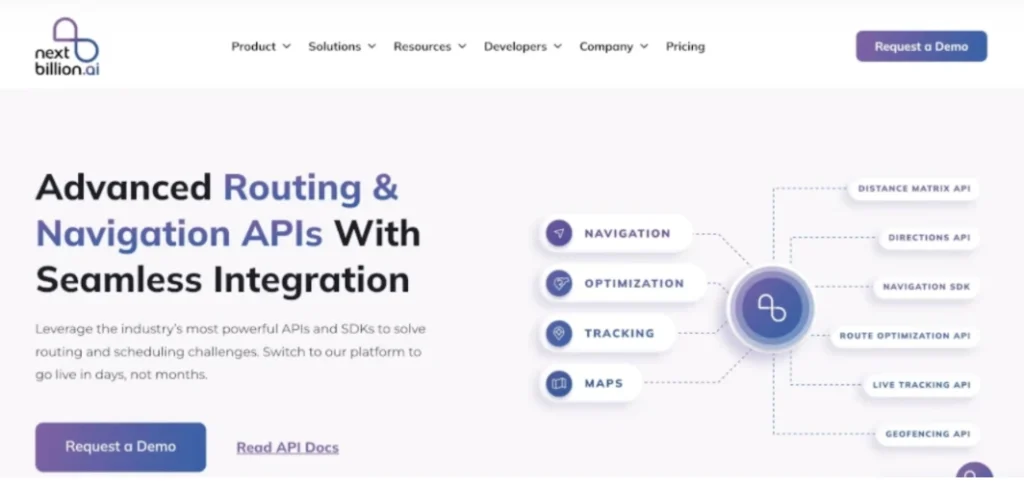
Oil and gas industry is being adapted to dynamic route optimization software, thanks to the increasing demand for more efficient delivery processes. To find the best solution for your business, you need to know what matters the most. To help you out, here are the must-have features to look out for in your route optimization software.
1. Advanced Analytics for Route Planning
The essence of every route optimization software is powerful advanced analytics for route planning. These algorithms analyze a multitude of factors, including vehicle capacity, delivery needs, traffic patterns, and multiple destinations, determining the most efficient routes. Optimization algorithms such as Ant Colony Optimization (ACO) or Vehicle Routing Problem (VRP) solvers regulate complex constraints to generate cost-effective routes.
Advanced analytics in route optimization software considers various contracts and objectives to generate routes that will reduce distance, cost, and time while adhering to operational limitations. Integration with big data platforms further promises real-time processing of traffic data and weather conditions for dynamic optimization.
Your business can also customize the analytical algorithm based on your specific needs and preferences, allowing you to develop a tailored approach to route planning. Integrating these optimization analytics will ensure that your business can achieve ideal results, even in complex operational environments.
2. Integration with IoT and Fleet Management Systems
Fleet management systems and integration with IoT further enhance the capabilities of route optimization software. It involves creating virtual boundaries or zones around particular geographic areas. When your vehicle or driver enters or exits such zones, the software will induce predefined actions, including sending alerts, updating route plans, or notifying customers.
IoT integration enables predictive maintenance by monitoring vehicle health parameters such as engine temperature and tire pressure.
The integration system improves compliance, prevents you from opting for unauthorized deviations, and enables proactive communication. In addition, the fleet management system with geo-based services provides valuable insights, including historical data, allowing you to optimize your logistics operations further.
3. Dynamic Re-Routing Capabilities
Dynamic re-routing systems employ machine learning to predict congestion patterns and suggest alternate routes proactively. Such dynamic rerouting capabilities efficiently save time and reduce unnecessary backtracking, which is a crucial source for oil and gas logistics, handling complex and multi-destination deliveries. It also prevents disruptions and reduces the need for manual interventions, maintaining customer satisfaction and optimizing resource allocations.
4. Detailed Reporting and Compliance Support
Moreover, in the oil and gas sector, adhering to safety protocols is paramount and required for managing fleets across locations. Compliance modules often connect with standards such as OSHA or HAZMAT regulations, ensuring adherence to industry-specific safety and environmental guidelines.
When route optimization software is used, it supports regulatory compliance and safety protocols by enabling the collection of electronic signatures and photo-first evidence for delivery confirmation.
A digital approach simplifies record-keeping, helps with liability issues, and facilitates adherence to hazardous materials handling regulations. Digitizing these curricular processes helps your company maintain sustainable and compliance standards while improving operational efficiency.
Challenges in Oil and Gas Logistics
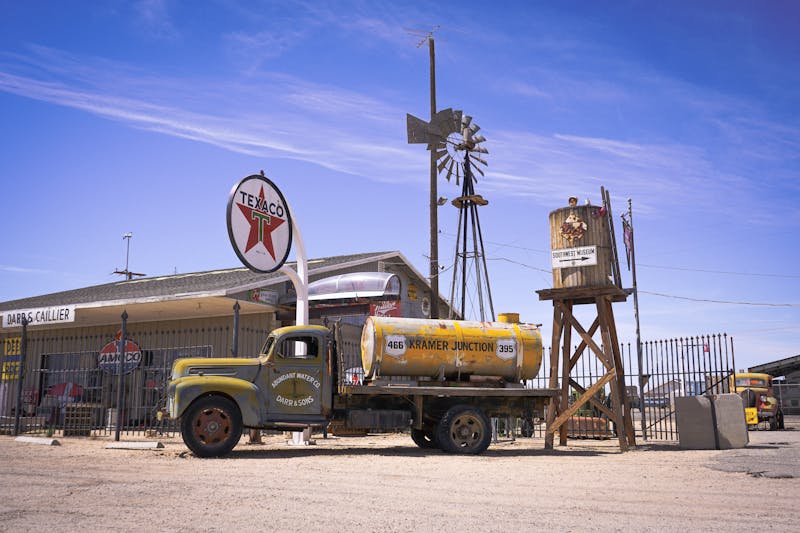
The market for oil and gas logistics is notoriously volatile, with fluctuations in supply, demand, and prices driven by technological advancements, geopolitical events, and shifting consumer patterns. Sophisticated supply chain optimization systems use AI and advanced modeling to anticipate disruptions, ensuring proactive responses to market volatility.
Opting for the right supply chain optimization techniques will help you navigate these dynamic market conditions. It will also enable you to adapt to evolving circumstances and capitalize on emerging opportunities quickly. Let us explore some challenges you might face in transportation management in the oil and gas industry.
1. Ensuring Safety in Hazardous Material Transport
Oil and gas transportation involves heavy equipment and hazardous materials that are related to explosions, fires, vehicle collisions, accidents, and more. IoT-enabled sensors on vehicles transporting hazardous materials can monitor various conditions. They can even monitor and trigger alerts in case of deviations from safety parameters.
Disruptions and breakdowns in the oil and gas supply chain might result in devastating consequences, often causing numerous injuries and deaths. The use of new and safer transportation management solutions can enhance efficiency and elevate safety standards for your business.
In this context only, organizations engaged in oil and gas logistics have to closely monitor their pipeline routine to enhance their safety measures and adapt to potential regulation changes. Technologies such as pipeline integrity monitoring systems and SCADA (Supervisory Control and Data Acquisition) are helpful in curating real-time oversight.
2. Managing Complex Supply Chains Across Geographies
Oil and gas logistics frequently operate in remote and challenging environments, including offshore platforms, deserts, or mountainous terrains. These locations present significant challenges in transportation management, such as limited infrastructure, harsh weather conditions, and stringent environmental regulations. Therefore, transporting materials and equipment to such supply chain sites necessitates specialized vehicles, vessels, and proper planning to ensure timely delivery while adhering to strict safety and environmental protocols.
Route optimization systems with geospatial data from GIS platforms curate solutions for dealing with complex terrains.
3. Compliance with Industry Regulations
The oil and gas industry is subject to a complex web of regulations and standards imposed by various national and international bodies. When it comes to supply chain management, you need to be compliant with regulations, which encompass certain components, including safety, environmental protection, and customs clearance.
Failure to adhere to these regulations will result in operational disruptions, significant fines, financial loss, and substantial reputational damage.
Automated compliance systems ensure that vehicles transporting hazardous materials meet regulatory requirements for load limits, safety checks, and route approvals. Compliance tracking modules in modern logistics systems utilize blockchain for secure documentation and tamper-proof record-keeping.
The Bottom Line
The future of oil and gas logistics lies in automation and sustainability. Despite the risks, the industry is on track to build a better world. The industry will face increasing pressure to transition to cleaner, greener energy sources, reducing its environmental impact.
Such a heightened focus on carbon capture and reduced emissions has led to renewed interest among businesses in adapting to sustainable practices in oil and gas transportation.
If you are tired of spending hours manually planning routes, which often leads to errors, delays, and ultimately loss, then it’s time to find the software solution for your complex needs, trying to optimize hundreds of tours together. You are on the right platform! At NextBillion.ai, we are pioneers in integrating advanced AI-driven routing software that empowers your business to respond swiftly to changes, minimize disruption, and make informed decisions that drive success.
Our route optimization API can be easily integrated with your existing telematics and other systems to simplify operations in the oil and gas industry. From providing ready-to-use routes that your emergency crew can use to reach a site quickly to help you achieve savings in the fleet’s operational cost, route optimization API ensures safer routes and enhances supply chain dependability with accurate and real-time route planning. Book a demo today to see how easy it is to get started with NextBillion.ai.
Frequently Asked Questions (FAQs)
How does route optimization software improve logistics in oil and gas?
The core of route optimization software lies in employing advanced algorithms that solve complex challenges in oil and gas logistics. These algorithms will help you calculate the best possible routes for delivery vehicles by considering multiple constraints, including time, distance, fuel consumption, traffic conditions, and other priorities.
What safety features are included in the oil and gas logistics solutions?
The oil and gas logistics involves exploring, utilizing, and transporting hazardous material. To ensure that the operations comply with safety guides, you should incorporate important features including risk management strategy, operation safety control, proper communication, and analysis.
How adaptable are these route optimization tools to changing regulations?
Route optimization tools can adapt to evolving regulations by incorporating specific parameters into their calculations. They analyze real-time data including traffic patterns, driver behavior, and unexpected delays, your business can dynamically adjust routes to avoid bottlenecks or reroute the path if conditions change. Such real-time tracking will keep the optimization process flexible and responsive to changing environments as well.
About Author
Bhavisha Bhatia
Bhavisha Bhatia is a Computer Science graduate with a passion for writing technical blogs that make complex technical concepts engaging and easy to understand. She is intrigued by the technological developments shaping the course of the world and the beautiful nature around us.

